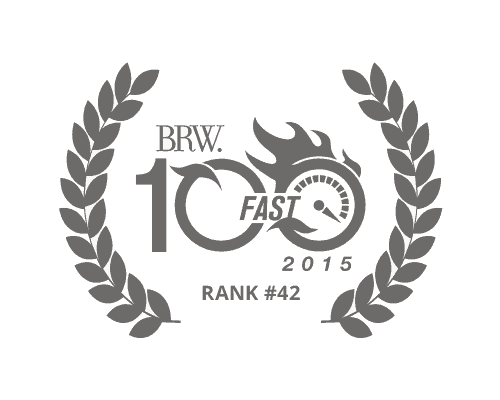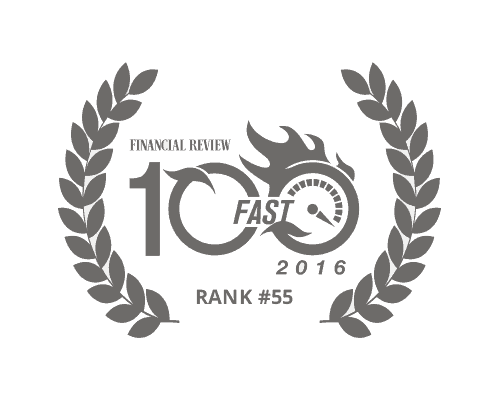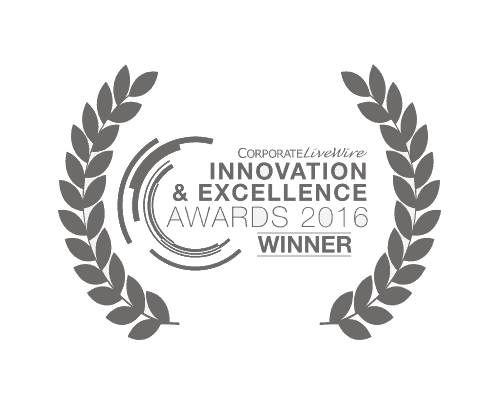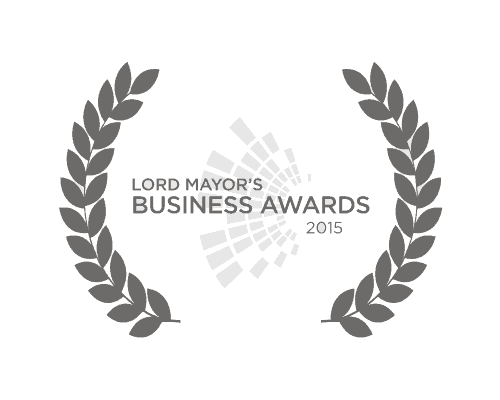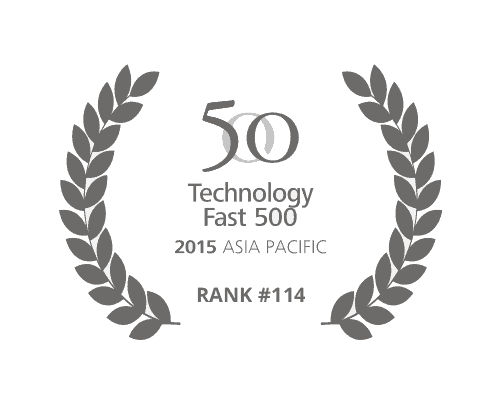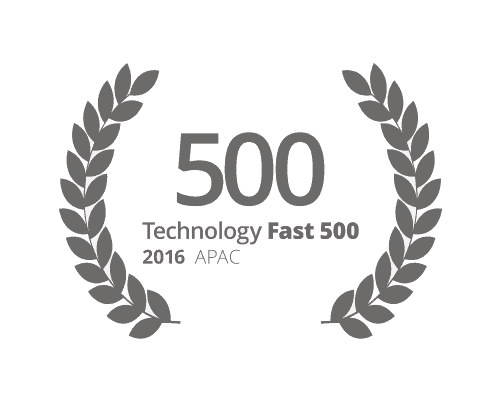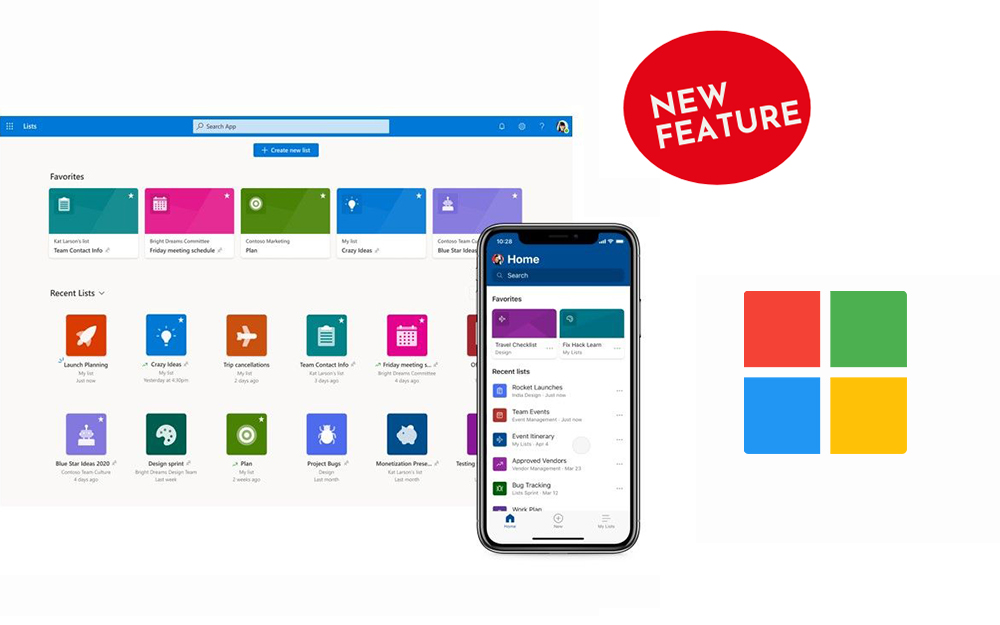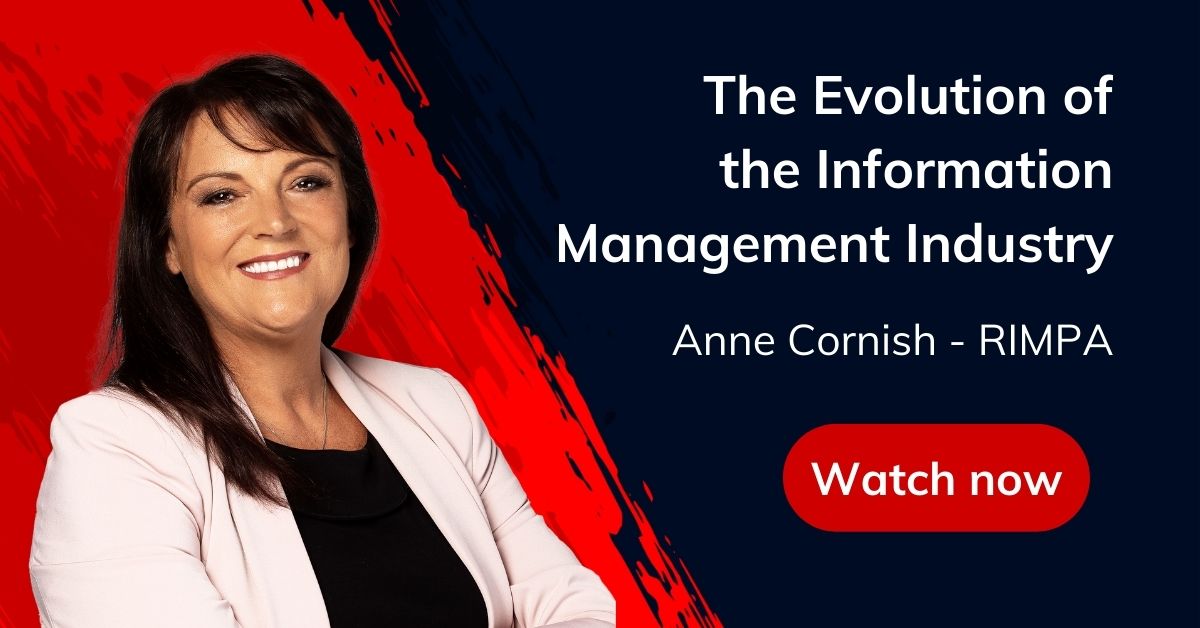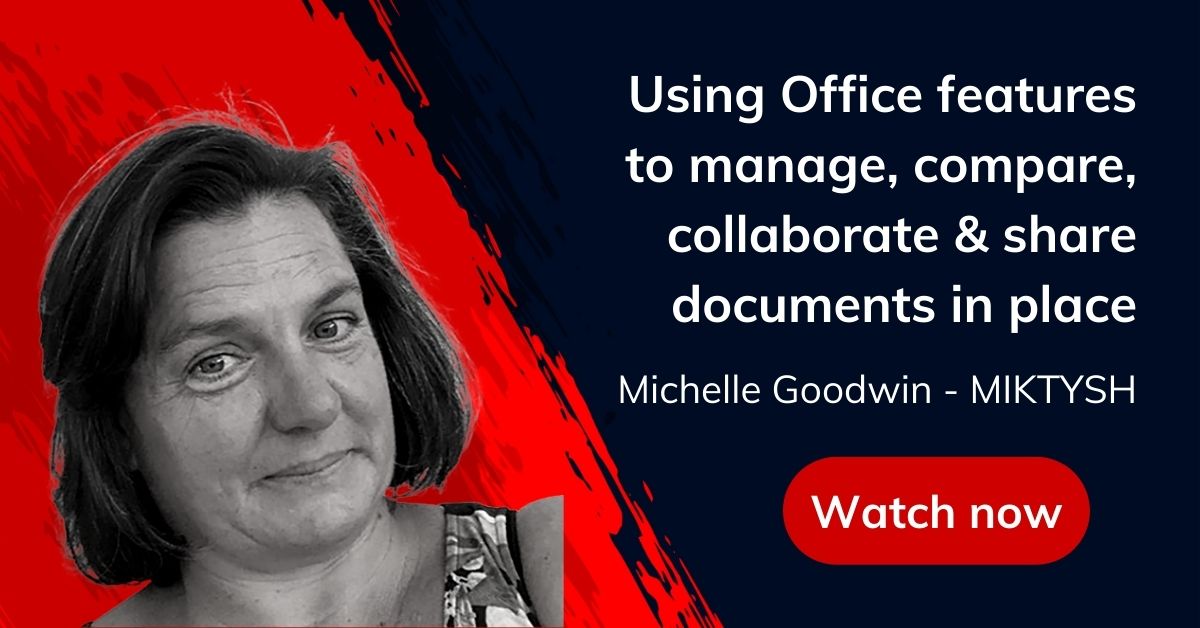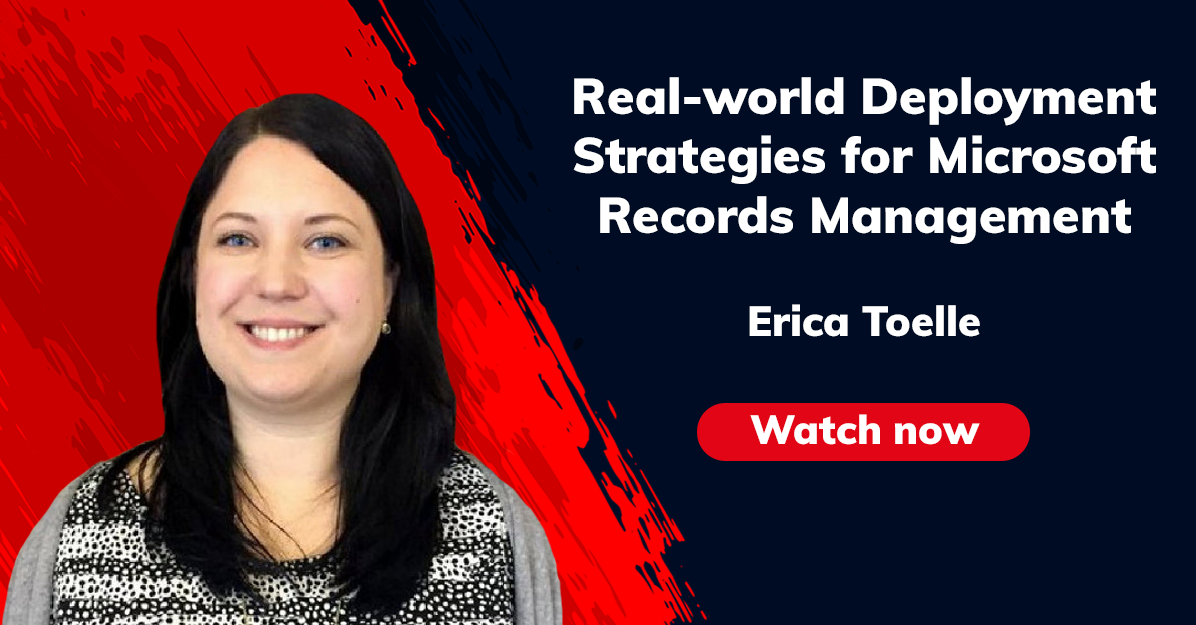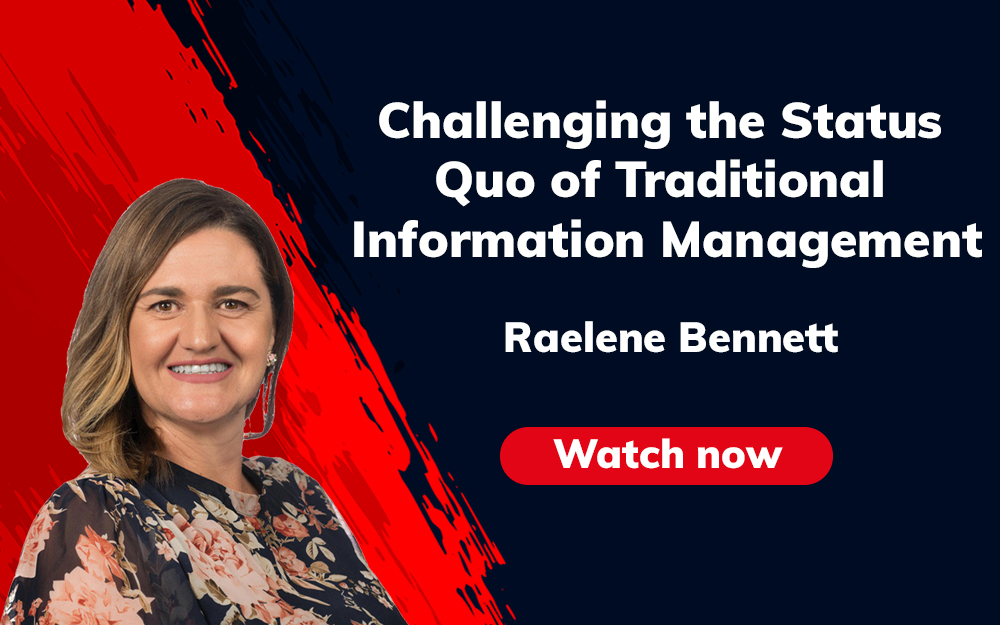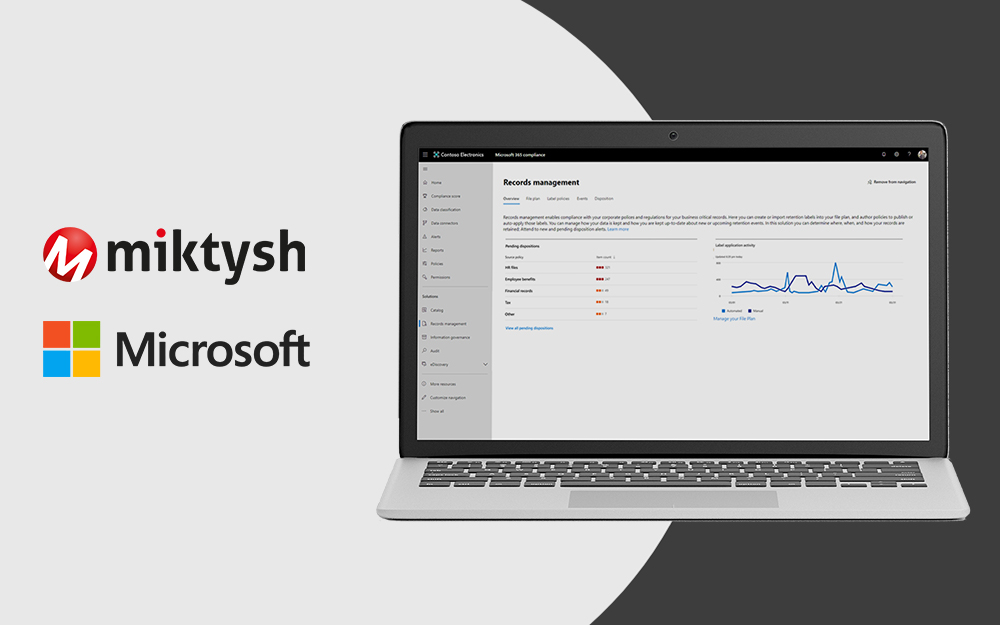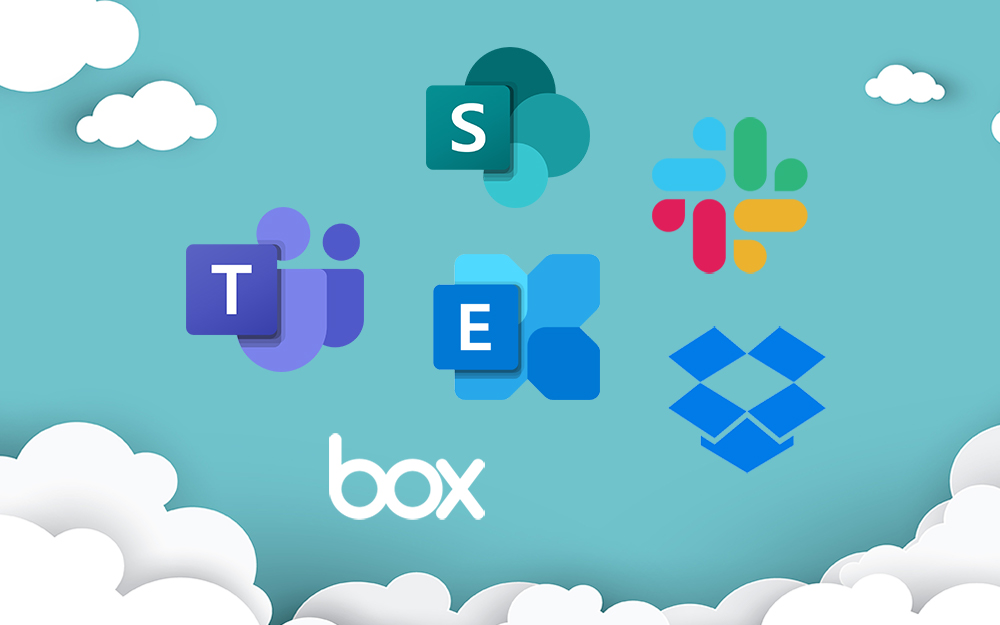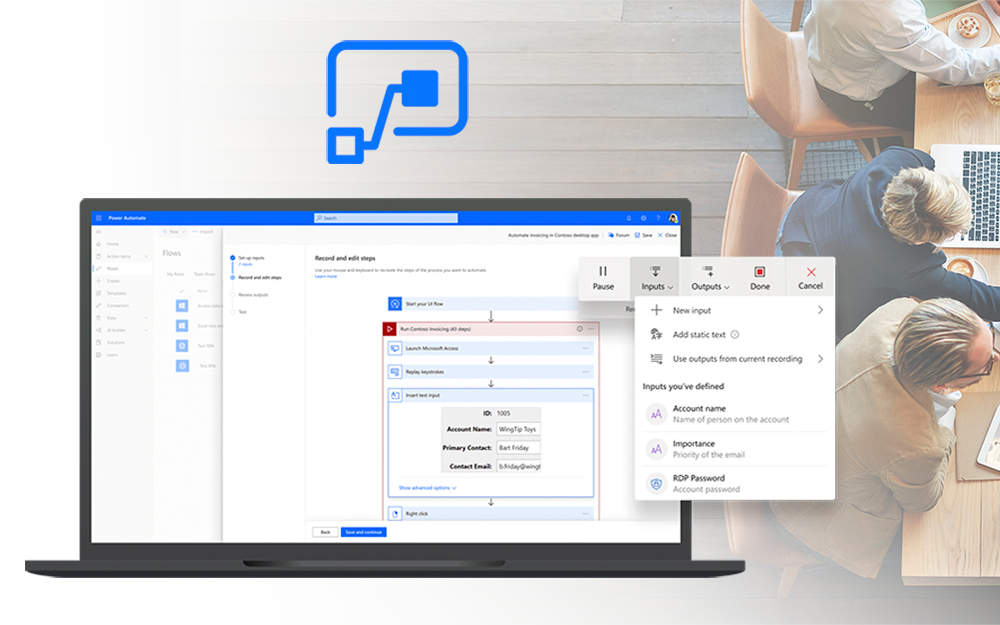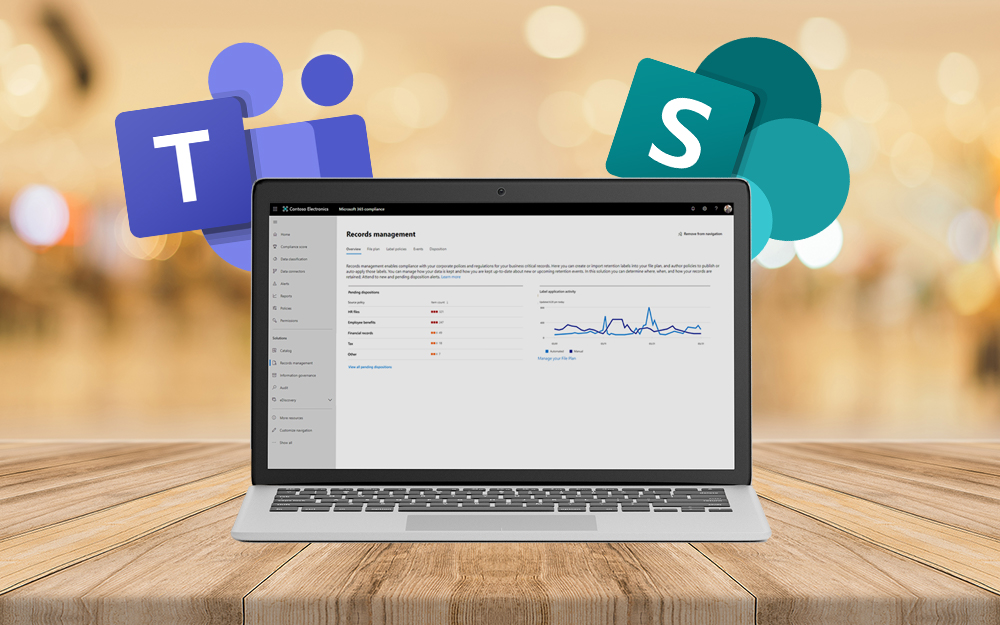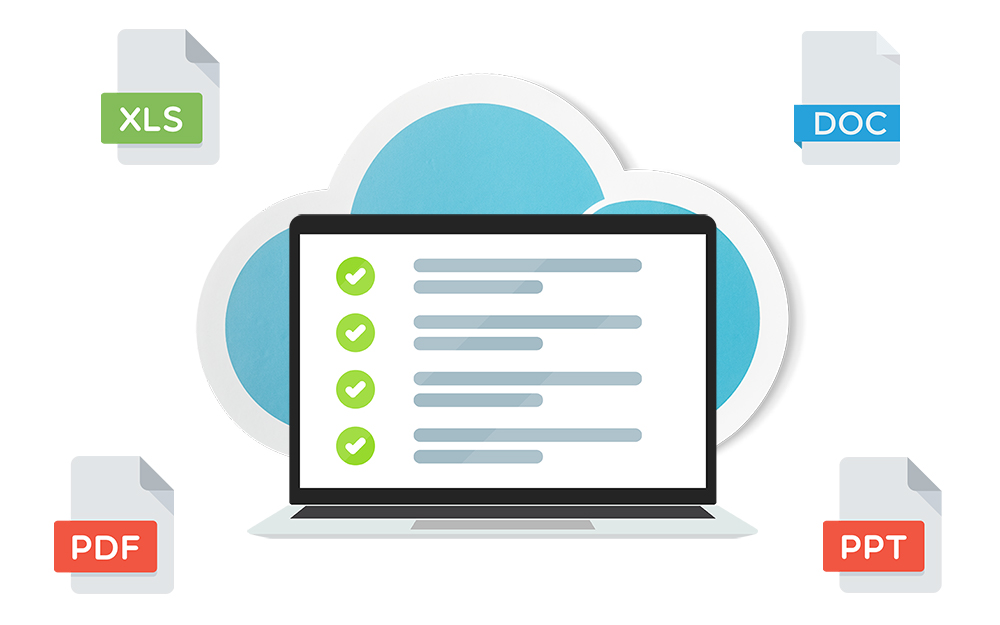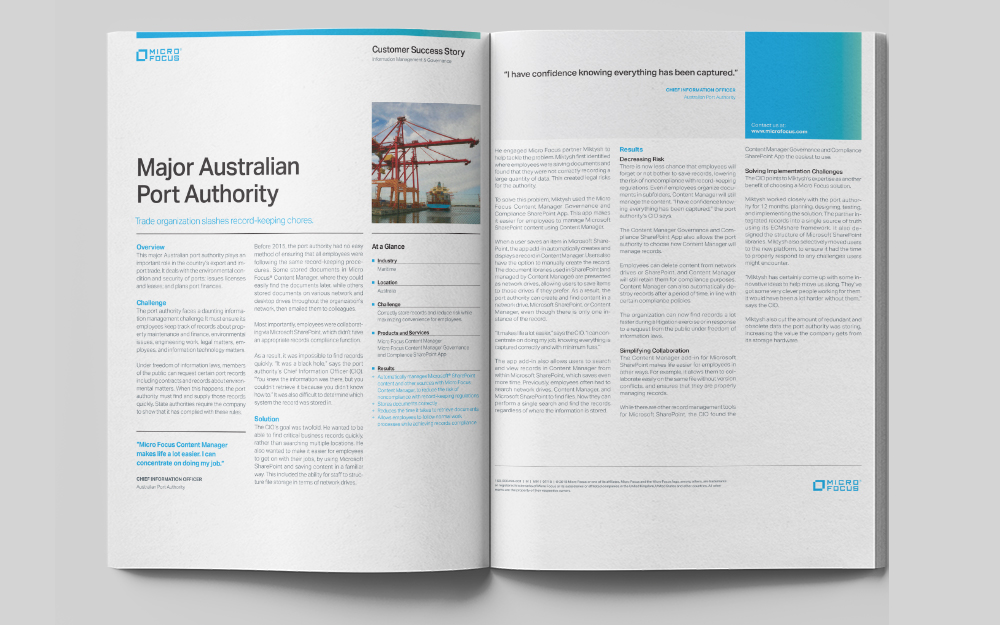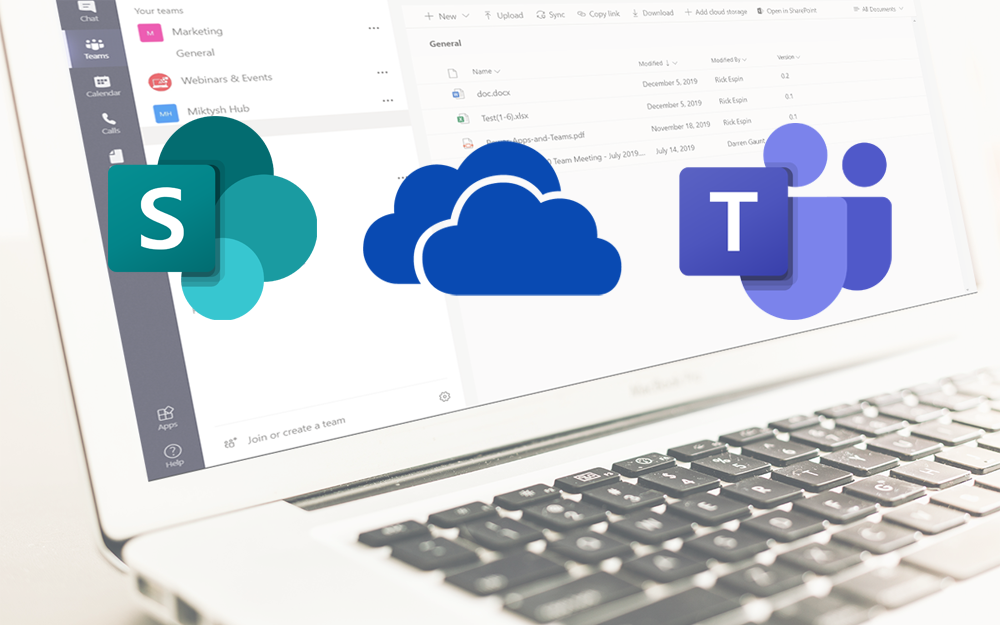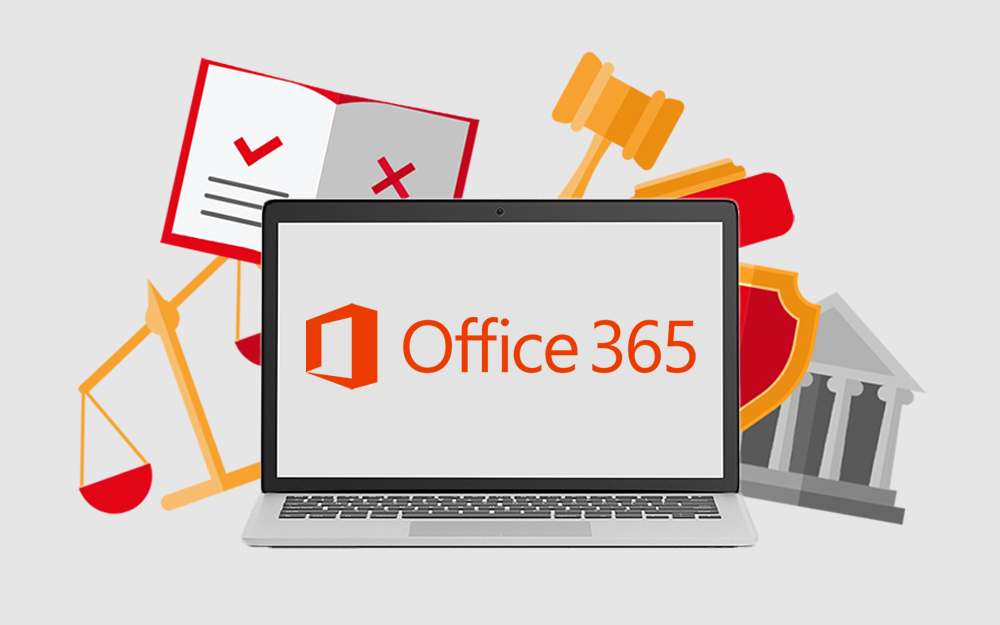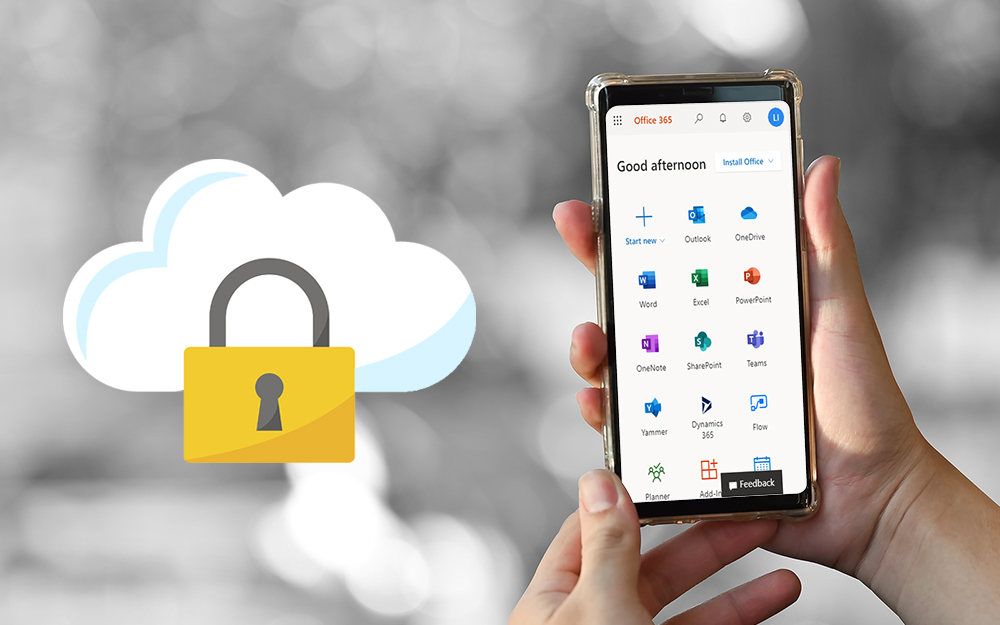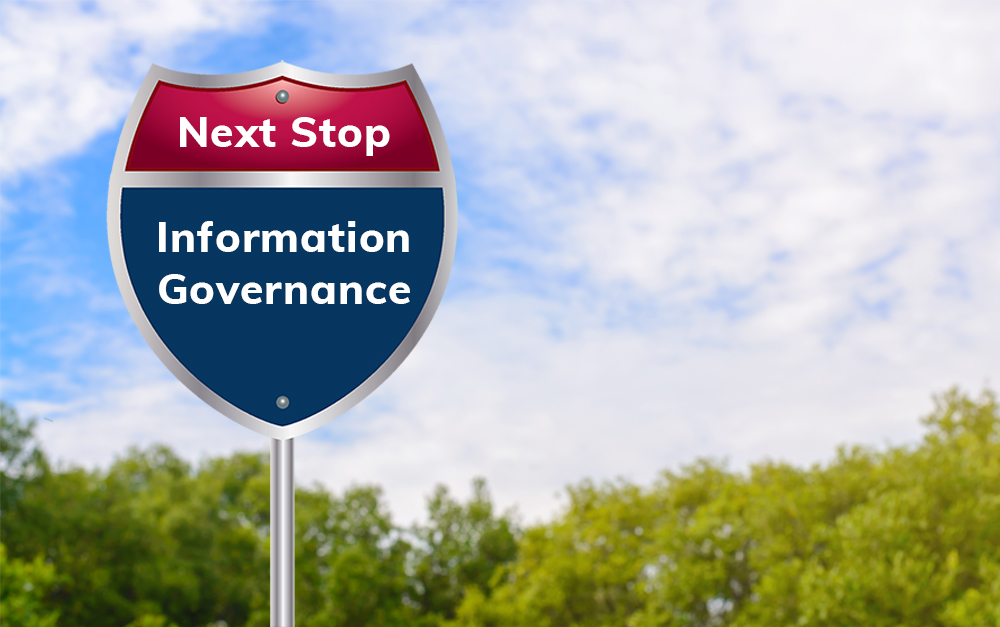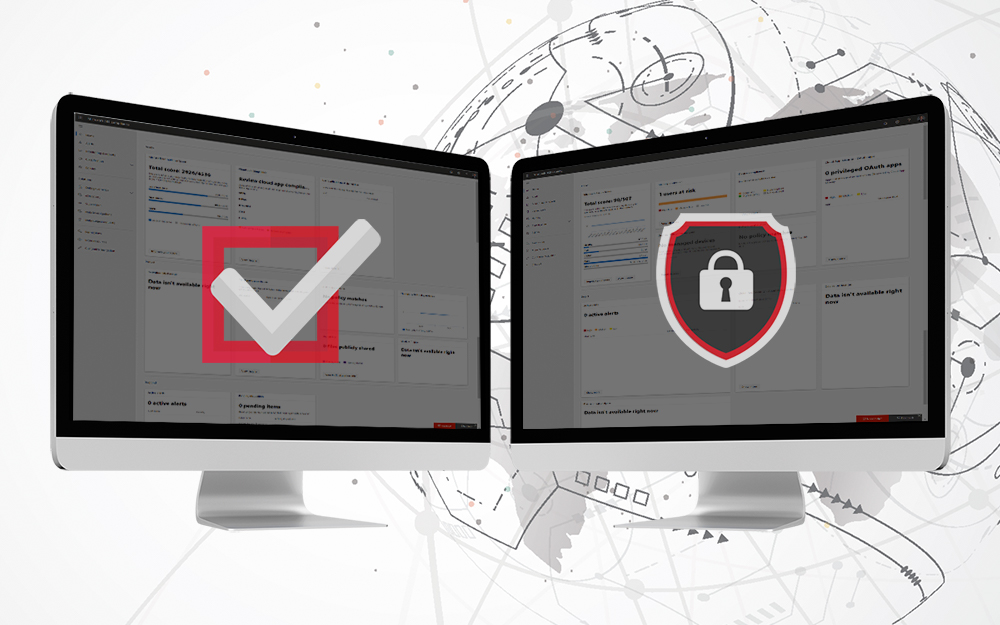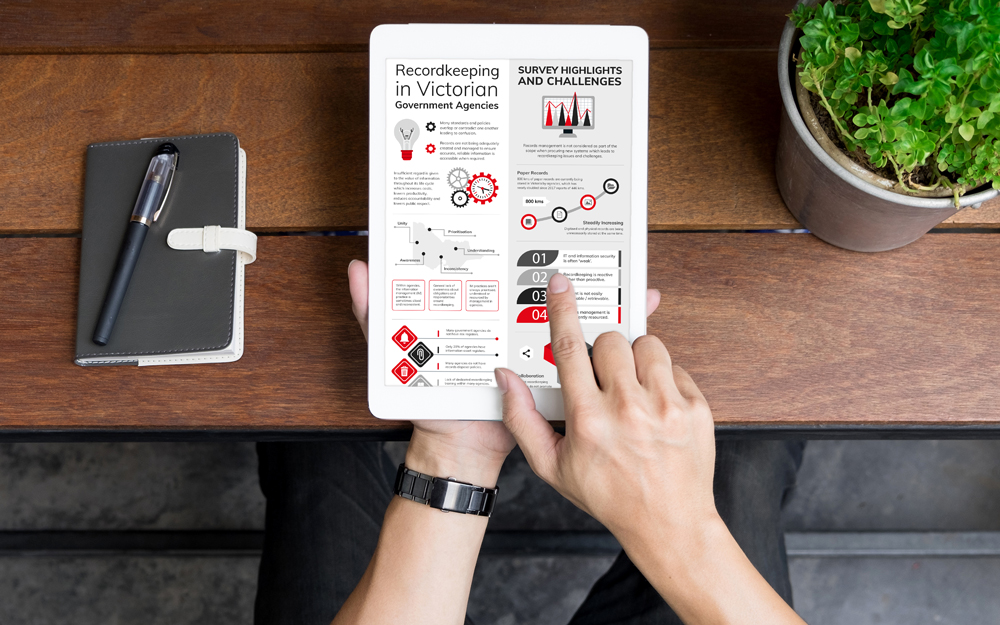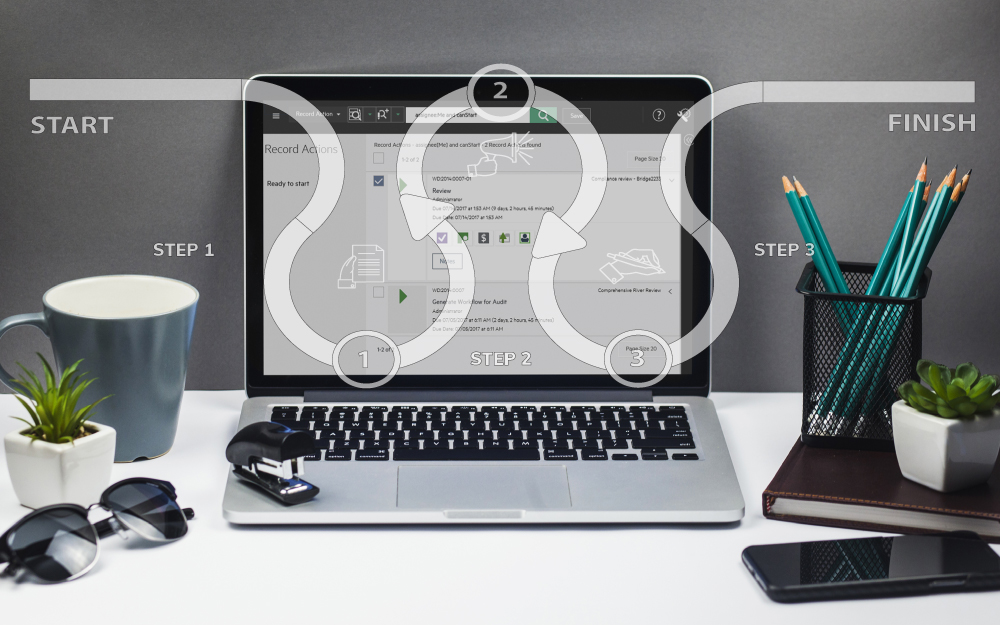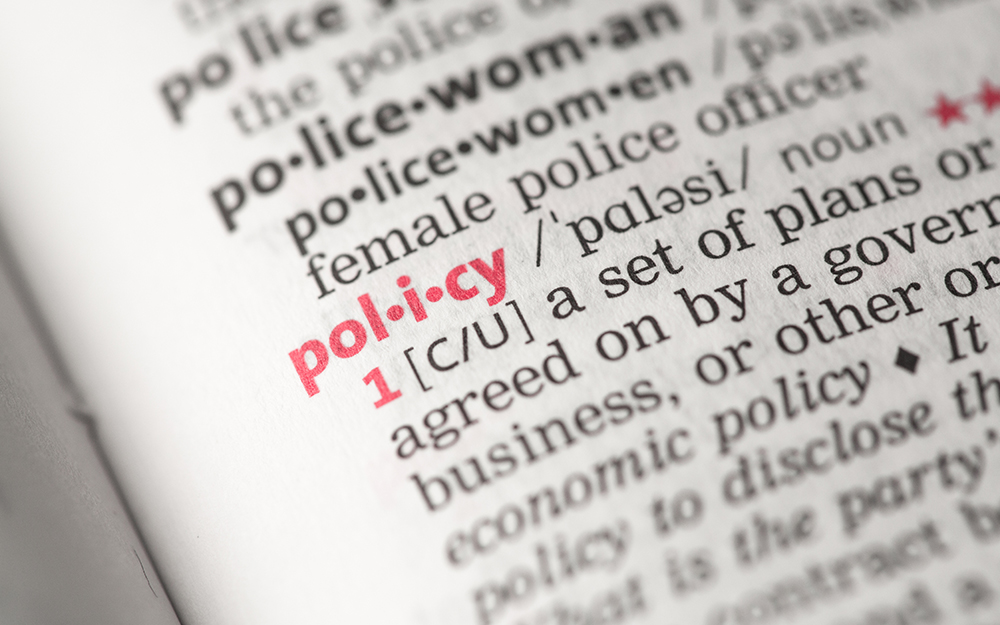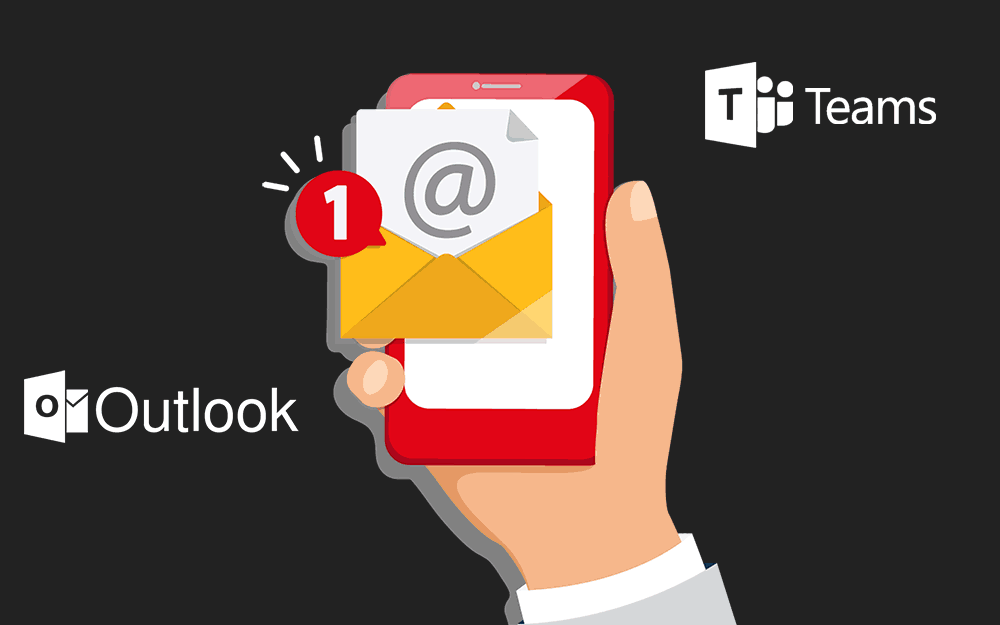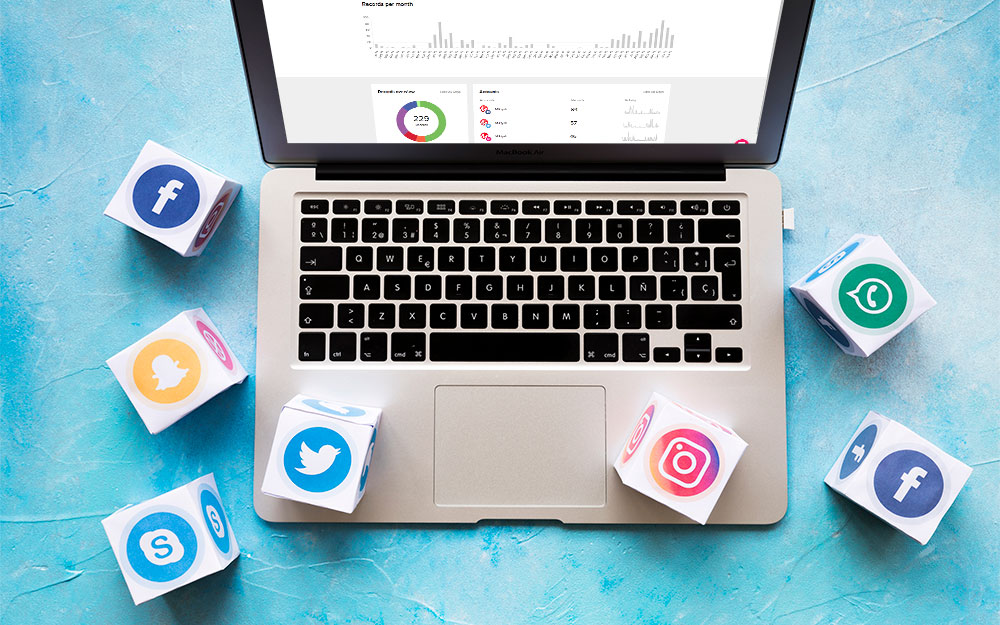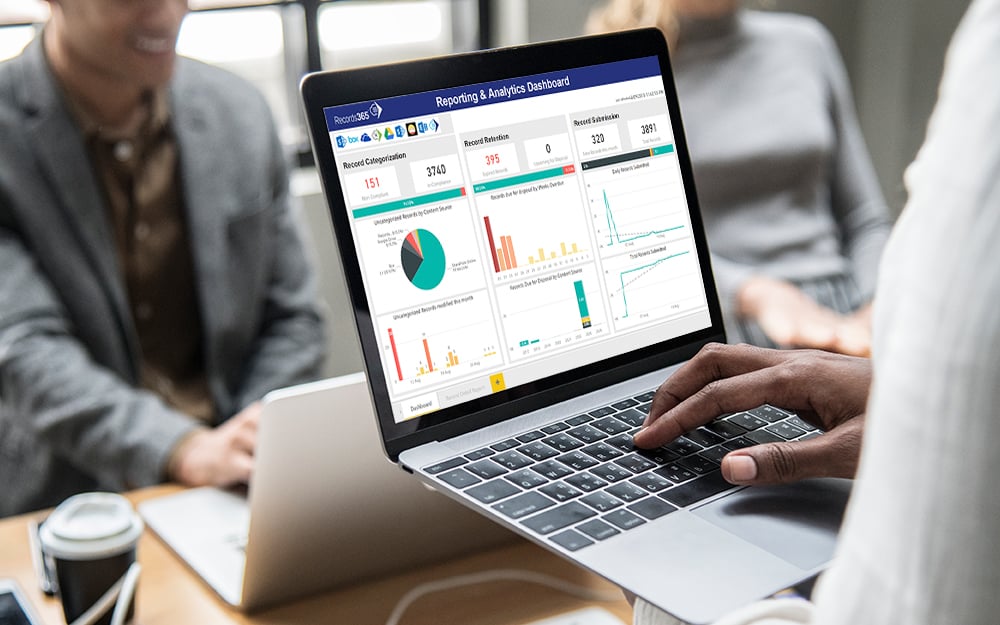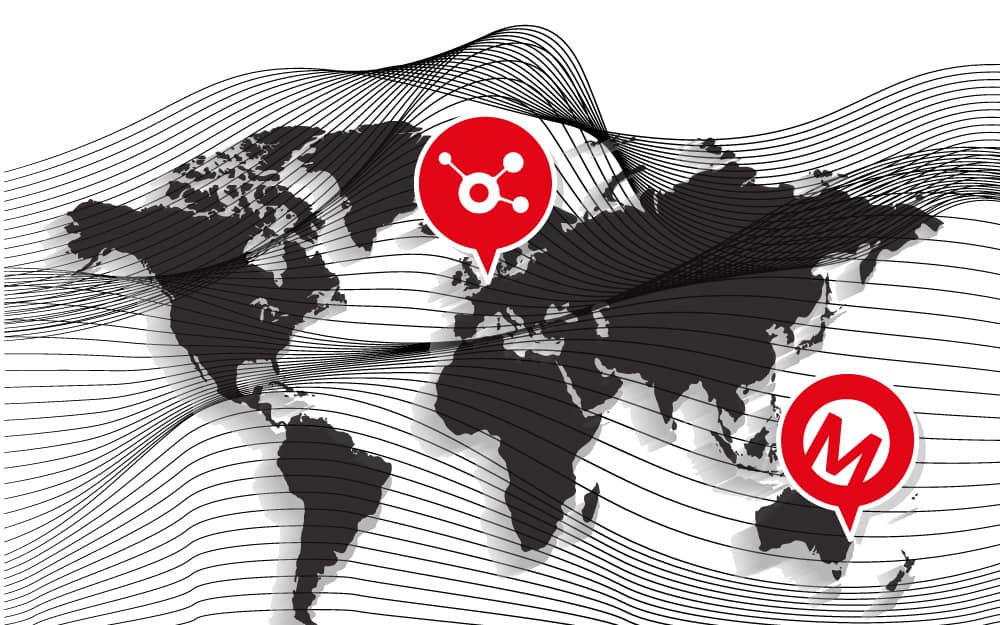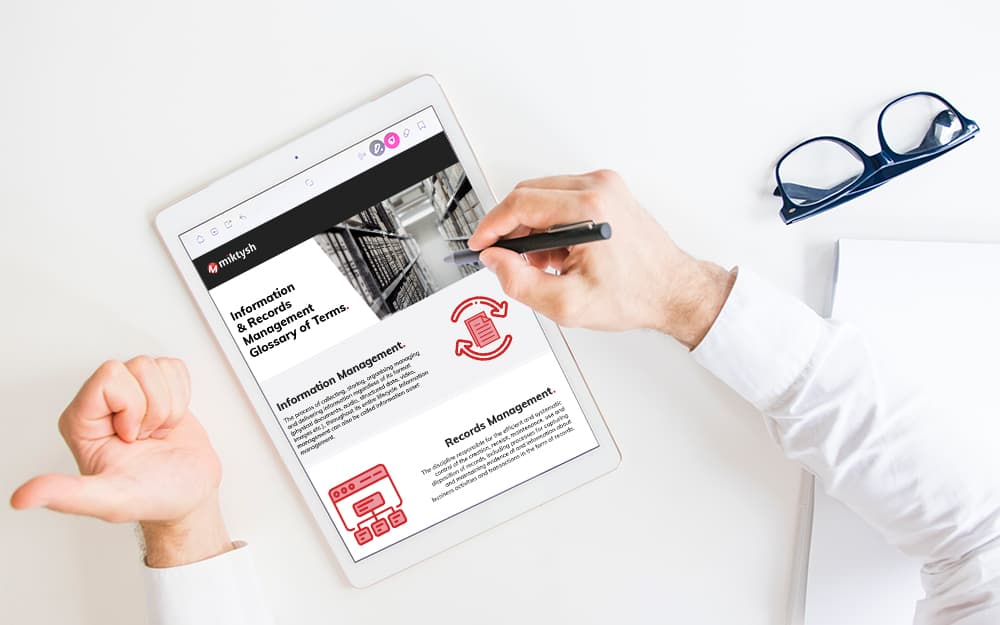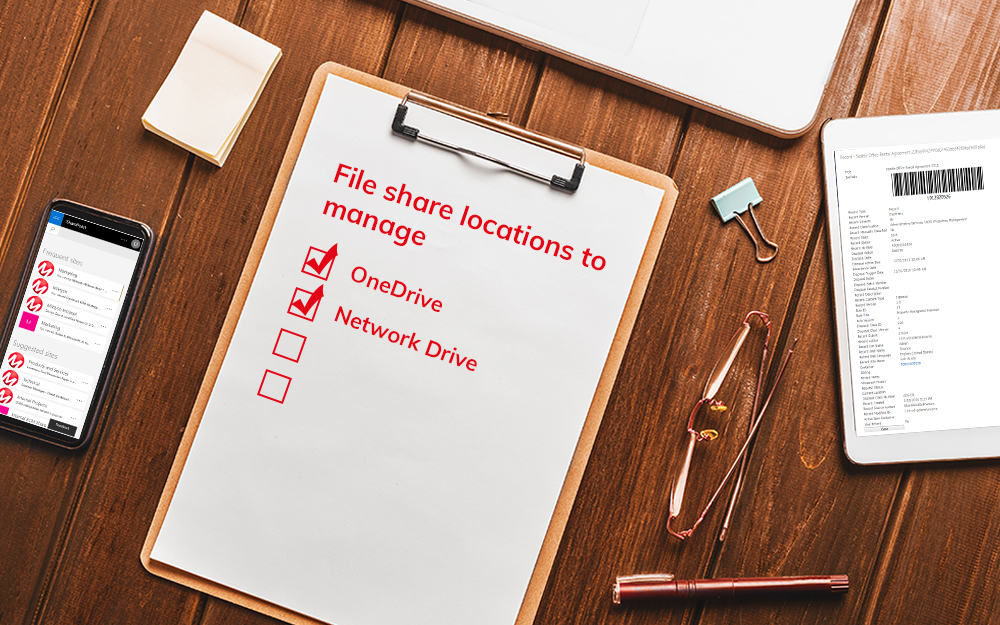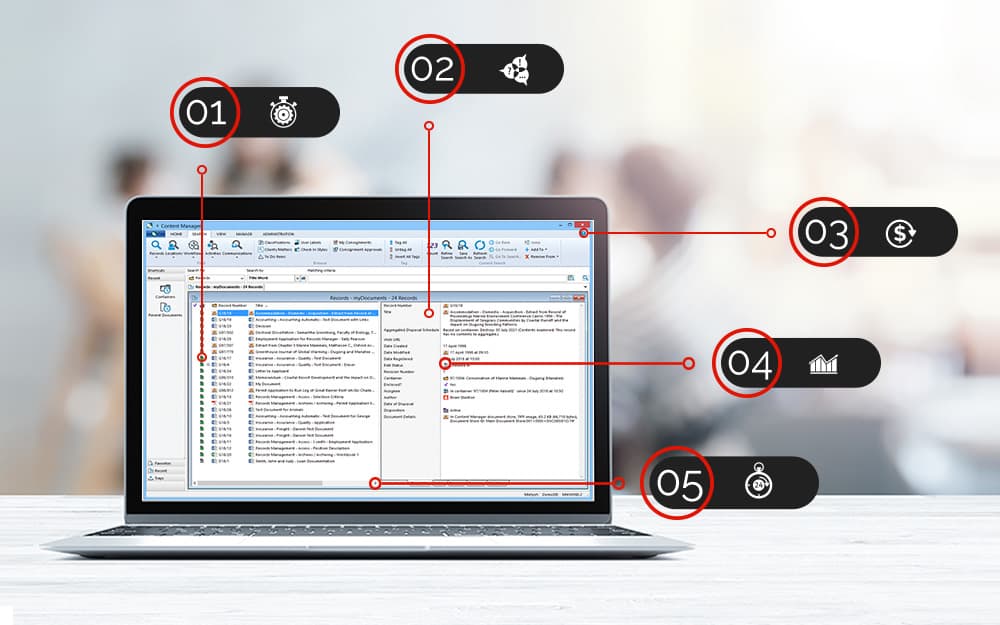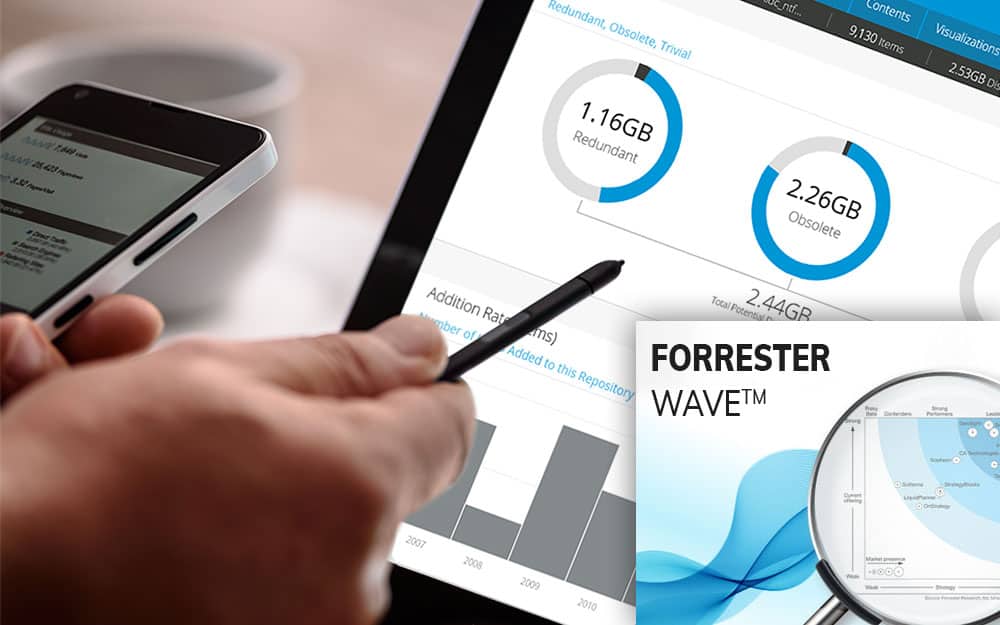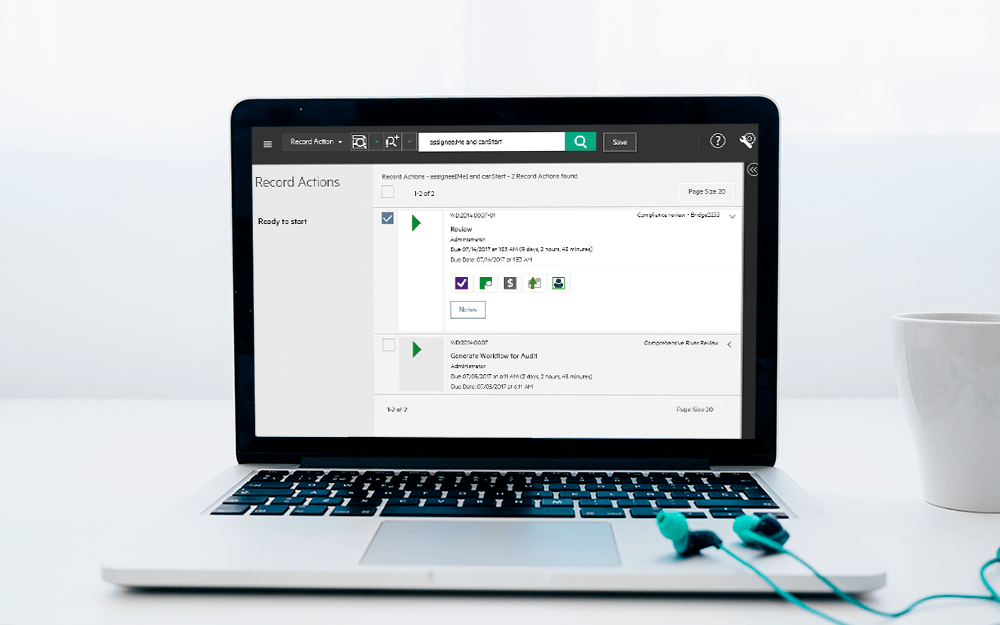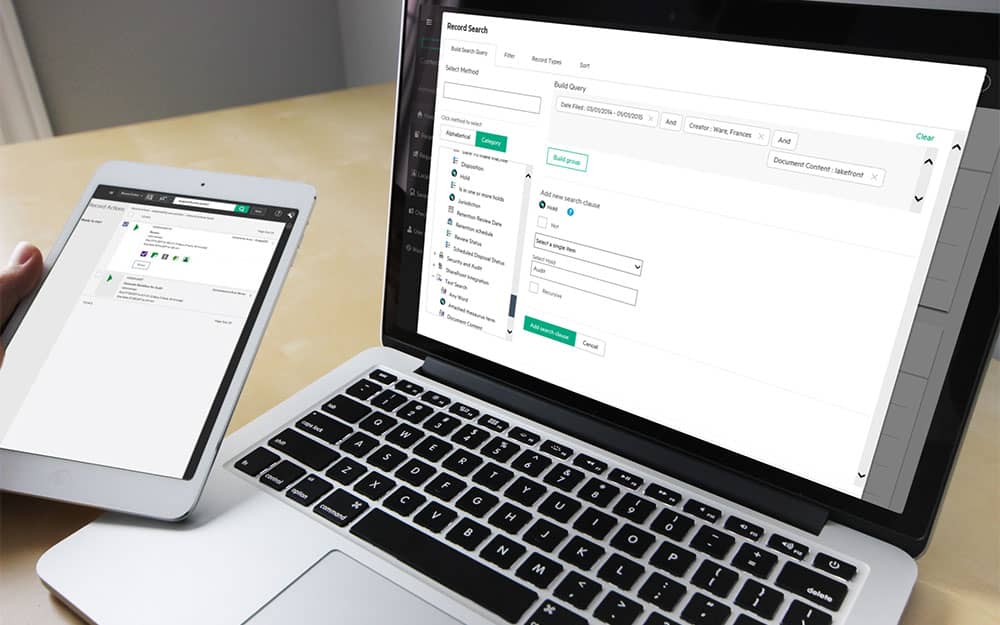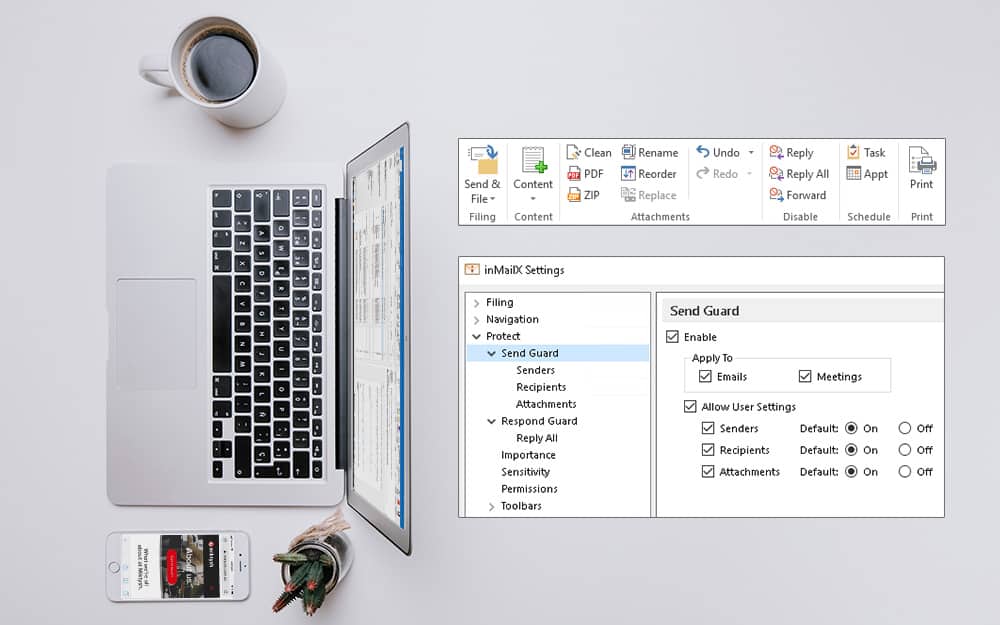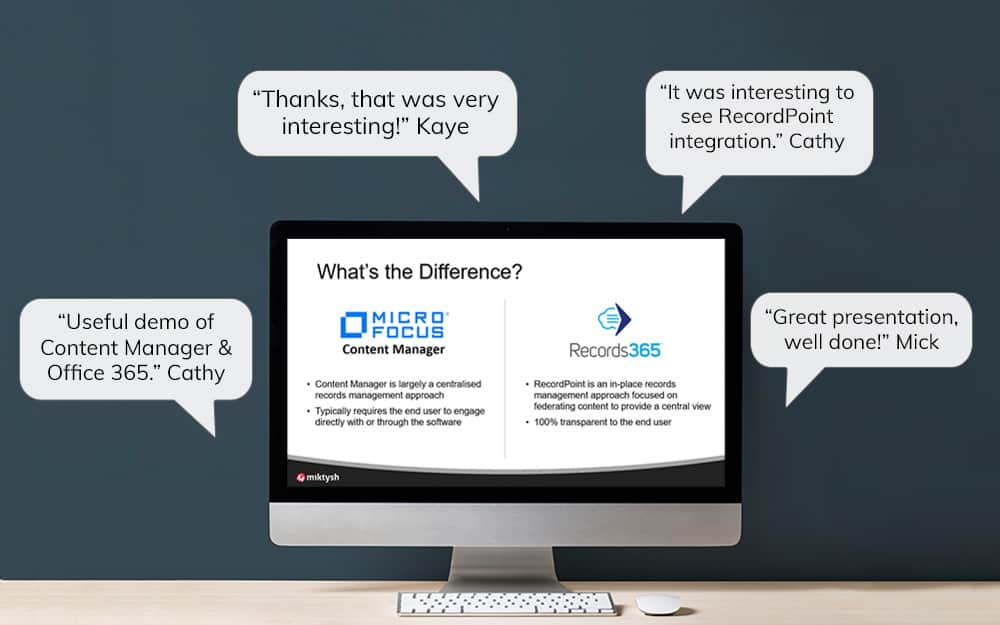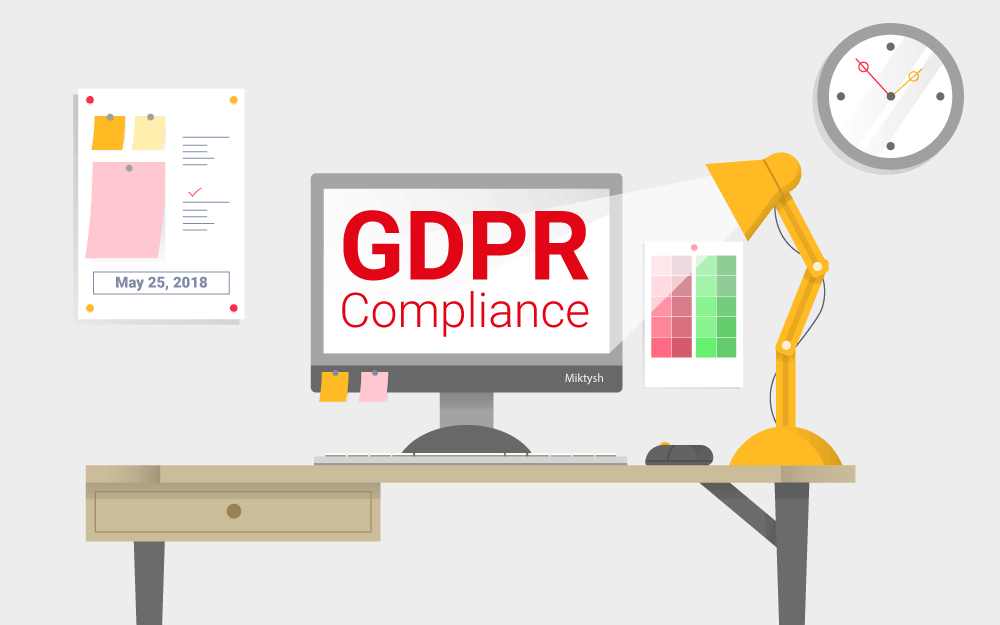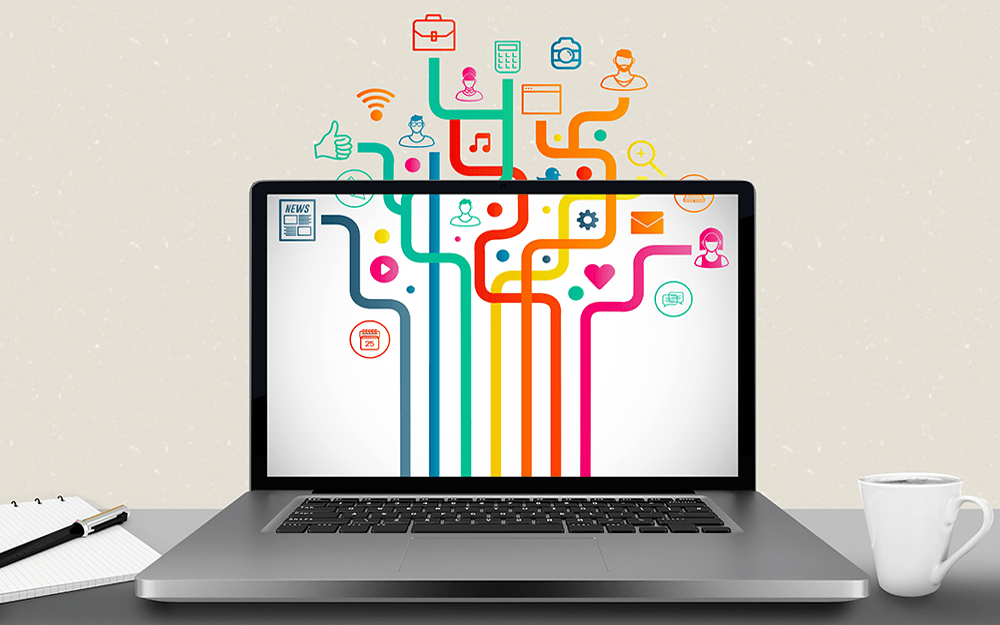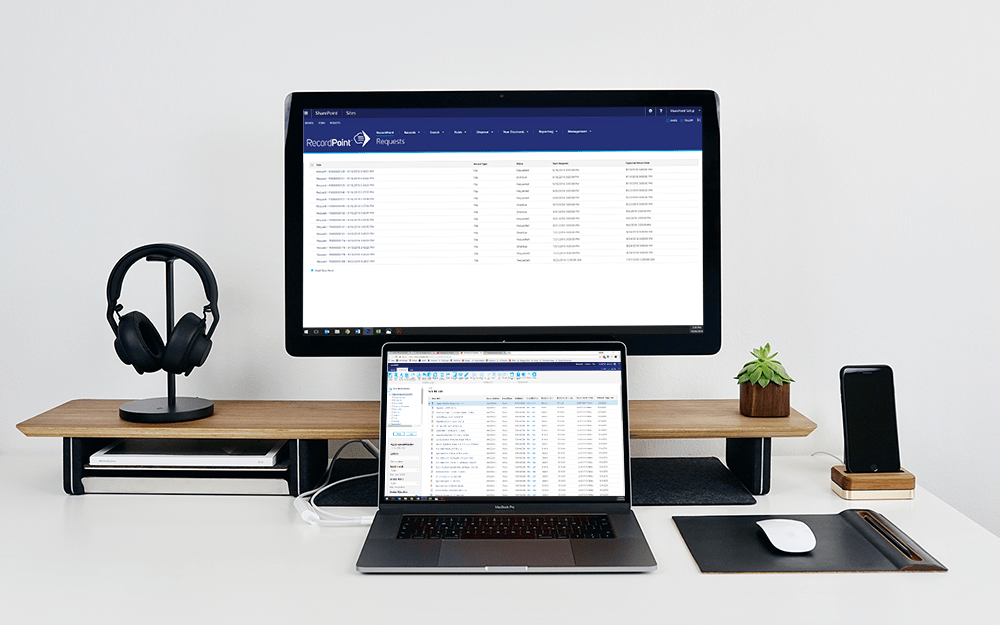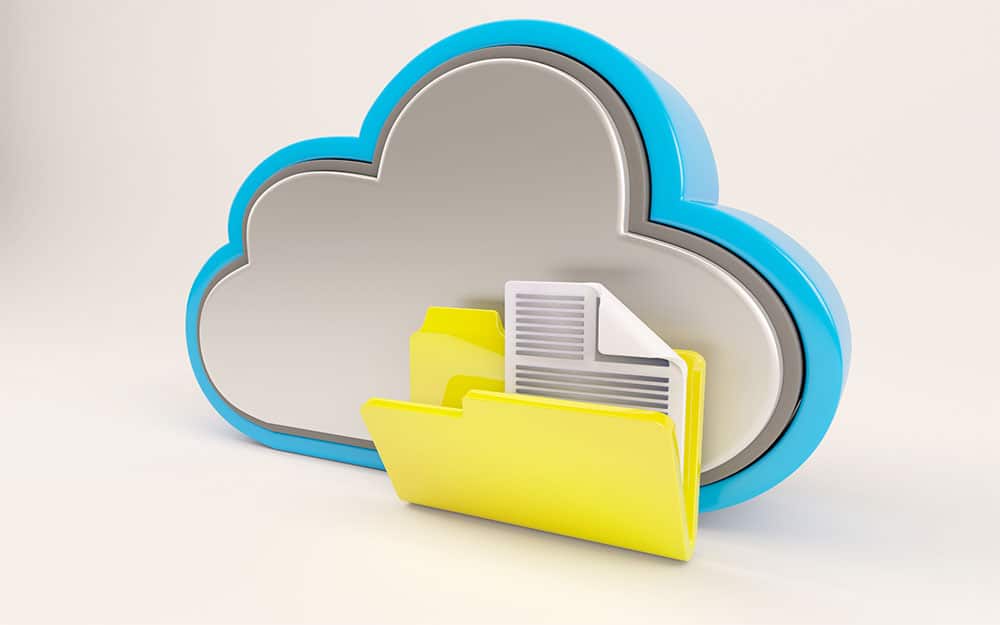Miktysh Blog.
Your go-to source for everything records management, eDRMS, Office 365, TRIM/Content Manager, RecordPoint, AvePoint, and EncompaaS related.
Categories
Topics
7 Interprofessional Collaboration Strategies with Examples for Your Workplace
Jul 11, 2019 | Email Productivity

You’ve seen the inspirational posters, a stock photo of happy employees grouped around a table freely sharing knowledge and ideas openly and honestly, and below the image is an enlarged heading that reads “Collaboration”. You’ve probably even chuckled to yourself about how that isn’t a real representation of your workplace. Although “collaboration” has become a bit of a corporate buzzword, that doesn’t mean that it’s an empty cliché. Instead of laughing, insight change in your organisation! A healthy state of collaboration can exist in the workplace and is achievable. You don’t have to work for a Fortune 500 corporation with unlimited funding to have that poster dream. Here are some interprofessional collaboration strategies to promote collaboration in your workplace. Even if you’re not in a management position, most leaders will be open to ideas that will fuel workplace harmony.
Provide a Platform for Social Interaction
Get your interdepartmental teams talking and collaborating through corporate citizenship activities. Corporate citizenship activities or corporate social responsibility are terms used to describe charitable contributions by organisations to their local community. Suggest that your workplace establish small committees to plan workplace activities like a charitable walk/run, packing food at the local food bank, clothing donations for a women’s shelter, corporate blood donation or toy drive for children in need. These committees can also coordinate and promote community events like Harmony Day, NAIDOC week, World Mental Health Day or International Women’s Day to name a few.
If these suggestions sound intimidating, start smaller by organising a team meal. Potluck lunches or morning teas are a great way to get people to talk about their lives, backgrounds and what they’re working on. Be prepared — if your staff are competitive and can cook, you may have unwittingly launched Office Masterchef.
Reward and Recognise
Inevitably most job performance goals are assessed on an individual level, however consider incorporating team-oriented rewards or goals. When a company reinforces the importance of collaboration and team-based goals, individuals will be more likely to understand the importance of teamwork and consciously or subconsciously strive for synergy amongst the team. Recognise and reward group accomplishments with shared accolades such as a team outing, catered lunch or hire a massage therapist to render mini services in the office. It doesn’t have to be a grand or expensive gesture, use laurels to award the team visually by making a physical sign or an email signature for an outstanding team, or by purchasing a physical plaque or award.
Formal peer-to-peer recognition programs can reward teams and individuals for going above and beyond what is expected or providing extra assistance. This will generate positive interaction between employees and business units, and make employees feel appreciated.
As always, it needs to come from the top. Leadership needs to verbally recognise and encourage teamwork in the organisation. Look for opportunities for teams and departments to collaborate, have cross-divisional projects and encourage input from all staff.
Integrate Collaboration into Day-To-Day Tasks and Project
Integrating teamwork into everyday tasks will open dialogue and encourage knowledge sharing. Seeing co-workers collaborate regularly will reinforce a team oriented culture. For instance, a Marketing team could do an internal or external monthly feature on an employee, creating a ‘getting to know you’ piece to promote internal skills and talent. Hosting quarterly technology update sessions will get your IT department out of their pod and into the limelight, they can share what’s new in their world. Same goes for your product team—staff are always interested in what your company will be releasing next. If you don’t already have one, consider creating and distributing an internal newsletter coordinated by a different team every month. This is a great activity that always involves cross-departmental cooperation and interaction.
Incorporate Team Building Activities
Another interprofessional collaboration strategy is to, where possible, incorporate team building activities. These can be large or small scale and don’t have to have a large price tag. Here are a few ideas;
- Magazine Story – for this challenge, have each team create an imaginary magazine cover to highlight a successful business achievement for project. This includes designing the layout with images, headlines and quotes. This is a great activity for inspiring your team to think big.
- Shark Tank – break your team into mini groups and have them pitch a new product or service for your business. This is a fun way to promote innovation, collaboration and entrepreneurship.
- Question Master – have a meeting kick off with a thought-provoking question to all the members. Like “If you could bring a fictional character to the real world who would it be and why?” or “If you were to go back to school and get an advanced degree, what would you get and why”.
Apply some of these team building activities to the beginning or end of meetings or go bigger by hosting an external activity. Team building workshops will have your staff interacting and forming bonds. Want a physical challenge? Try an escape room, kickball league or a team hike.
Encourage Open Communication
Open plan workspaces are now the standard for most modern workplaces and are intended to bring down the metaphorical walls between employees and departments, thereby increasing communication and fostering a collaborative environment. Open plan offices not only provide a healthy workspace by increasing natural light and airflow, but also promotes relationship building interaction and break down tangible and intangible walls.
Another way to boost cooperation is through round table input during meetings and brainstorming sessions. Inevitably there are quieter members of the team who feel less comfortable contributing in group settings, but have valuable input when encouraged.
Consider hosting a leadership Q&A to provide an additional level of transparency as to the sales pipeline, new business ventures, important projects or a day in the life of the executive. Get everyone participating by opening a meeting with an icebreaker activity. Have staff mention a “win” from the prior week or month, share what they did over the weekend or have everyone share their favourite _ and why.
Share Knowledge, Insights and Resources
As one of your interprofessional collaboration strategies, create physical and virtual spaces for employees to collaborate. This could include a physical message board, social platform like Yammer, or through brainstorming sessions. It doesn’t have to be as formal as a meeting room; it can be as simple as a whiteboard or round table within a team space. Let staff freely jot down their ideas when they arise or post a comment on a virtual board. When doing annual planning, seek input from other teams.
Another tactic for uniting departments is to create cross-departmental “toolboxes” to equip teams with the resources they may need in the course of their roles. This could include;
- Marketing Toolbox may hold company logos, stock imagery, brand fonts, videos and templates, alongside company guidelines on social media usage and branding guidelines.
- Sales Toolbox may include sales presentations, brochures, product manuals and sales contact templates to enables staff to have quick access to information about your products and services.
- IT Toolbox may have downloadable software, message boards that share an organisation’s technical road map, expected outages and quick tips or guides from the technical team.
- RIM Toolbox may include instructions on how to use the records management system, file offsite and onsite retrieval process, the organisation’s records management policy, information governance framework, naming standards and links to any databases.
- Legal Toolbox may hold product terms and conditions, basic legal agreement templates, current regulations and legislation relating to your services or products.
- Business Services Toolbox would likely contain information relating to preferred suppliers, emergency response plans, internal policies, basic HR forms and other backbone support services.
Use Technology to Underpin Interprofessional Collaboration Strategies
Collaboration is prevalent within healthy organisations and has been proven to boost morale and lead to higher retention rates. Opening channels for communication whether face-to-face or electronically will raise cohesion amongst employees, help people trade experiences, knowledge share, and learn from each other.
Microsoft has acknowledged the importance of teamwork by creating a multitude of collaboration apps such as Teams, Yammer and Planner. Yammer is a professional social networking platform used for internal and external communication with employees and customers. Microsoft Teams and Slack are very similar tools, providing a team based collaboration space that a Microsoft spokesperson called them a “digital translation of an open office space”. Along with its inbuilt functionality (i.e. instant messaging and the equivalent to GoToMeeting), one of Team’s strengths is the ability to integrate other Microsoft tools into one space such as SharePoint, OneNote and Power BI, as well as external tools such as Trello, Hive and various CRMs to name a few. Planner and Trello are project management tools that help teams create and assign tasks, track progress and collaborate on each phase in a project.
As the modern workplace focuses on agility, it often means employees are working remotely, placing great importance on providing effective collaboration tools. Office 365 is a great product suite to start with, enabling teams to work anywhere on any device.
In Conclusion
One of the biggest contributing factors to organisational success is how effectively departments and employees work together. With increasing competition, it has become extremely important to encourage creativity in the workplace and promote healthy employee relationships. Interprofessional collaboration strategies include encouraging social interaction through small events, use of team building exercises, rewarding team wins, breaking down office silos with open plan work areas, having leadership encourage open communication and creativity, and through the use of technology platforms built for collaboration. Knowledge sharing and innovation increases with communication, so it’s worthwhile to promote teamwork in your organisation.
Charles Darwin put it best by saying, “it is the long history of humankind (and animal kind, too) that those who learned to collaborate and improvise most effectively have prevailed.”

Liza Tinker
Business Consultant
Liza is a SharePoint consultant with over 15 years’ experience in the private and public sector in the use and delivery of SharePoint and other collaboration solutions using Microsoft 365. She is passionate about technology and improving productivity and quality through collaboration and innovation.
Categories
Topics
Follow us on social
Popular content.

Analytics Driven Information Governance
14.07.2021

The New Normal Requires Zero Trust
27.06.2021
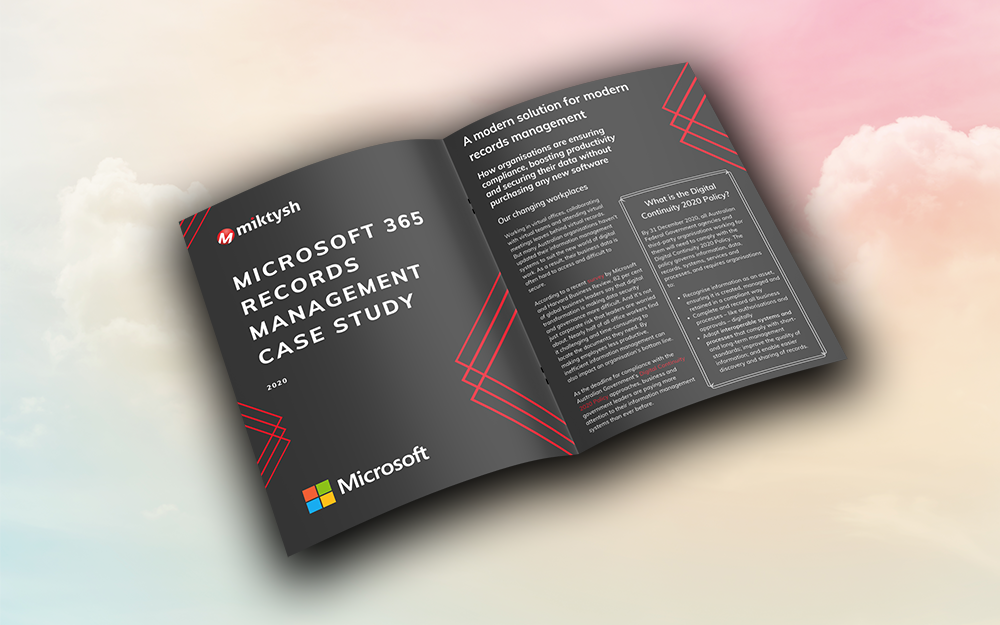
Microsoft 365 Records Management Whitepaper
06.11.2020

Micro Focus Launches Content Manager Select
28.05.2020
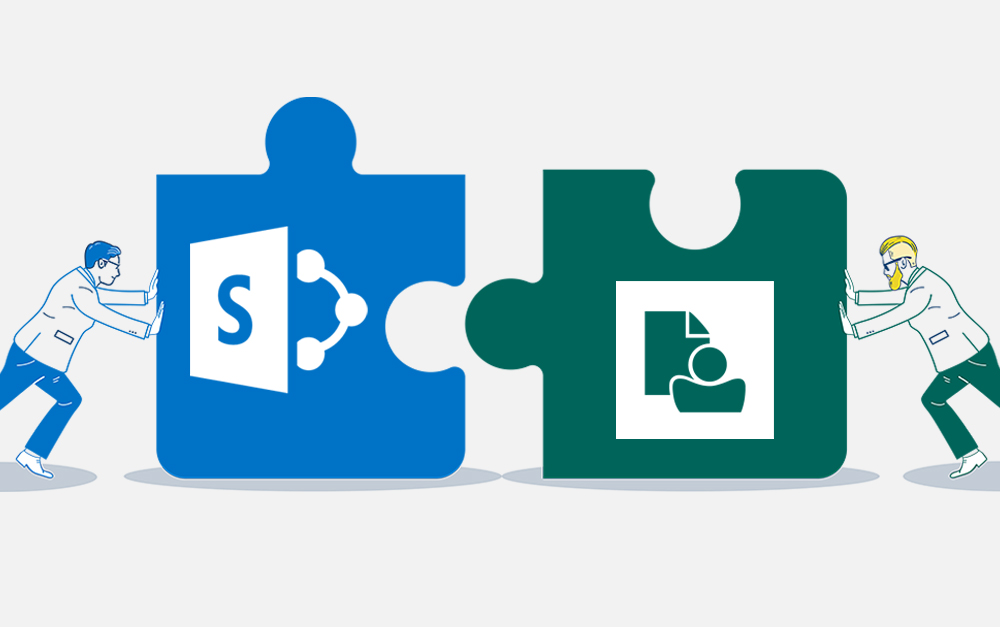
Content Manager SharePoint Integration Demo
20.05.2020
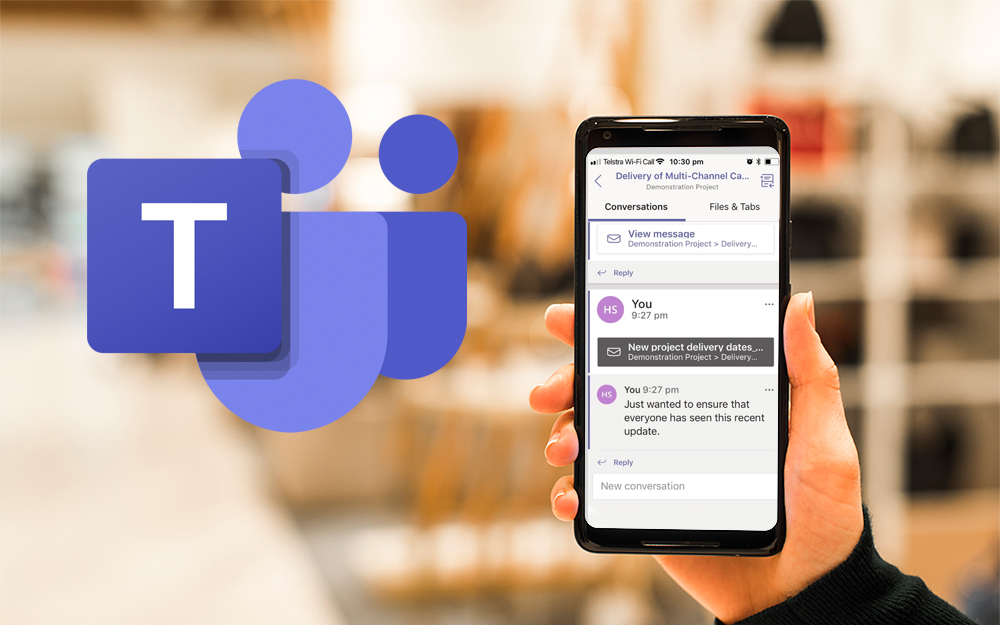
Top 7 Hidden Features in Microsoft Teams
11.02.2020
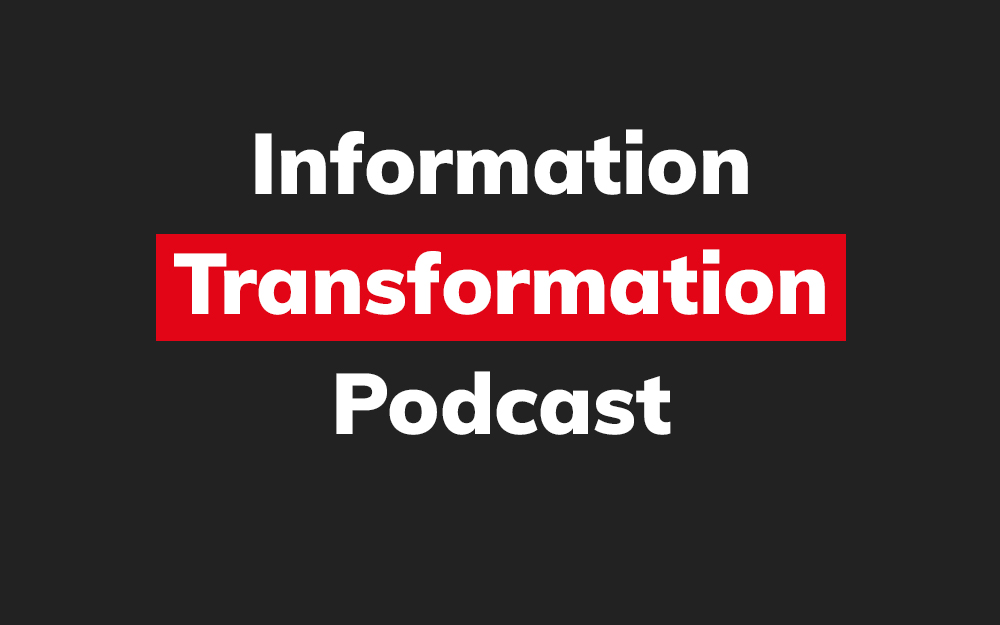
Integrate Content Manager with SharePoint
15.01.2020

Information Management Strategy Example
06.12.2019

How to Approach a Digital Transformation
13.11.2019
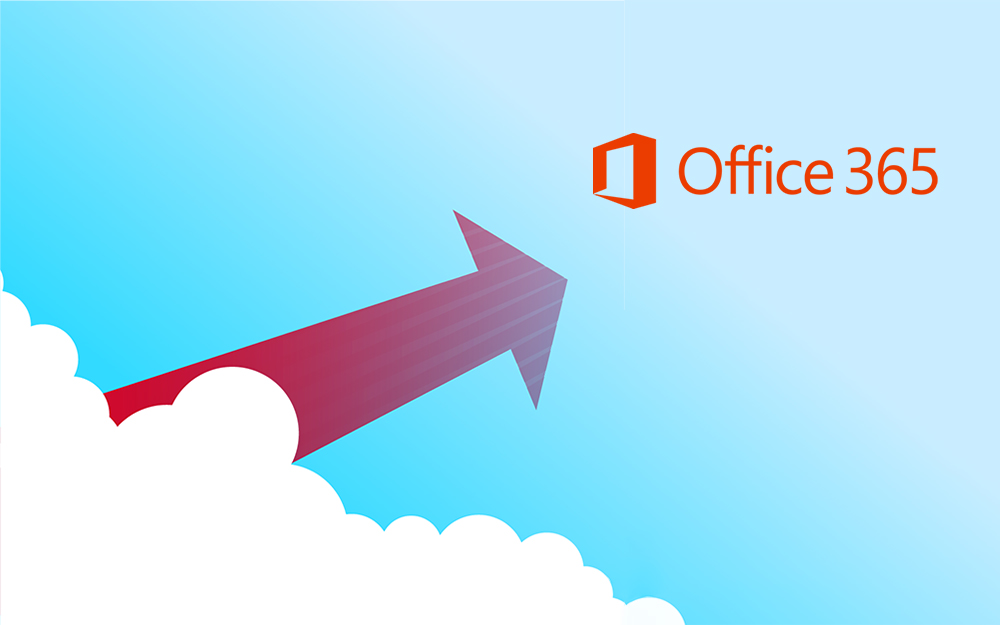
Top 5 Benefits of Migrating to Office 365
10.10.2019
Content Manager 9.4 Web Client
19.09.2019
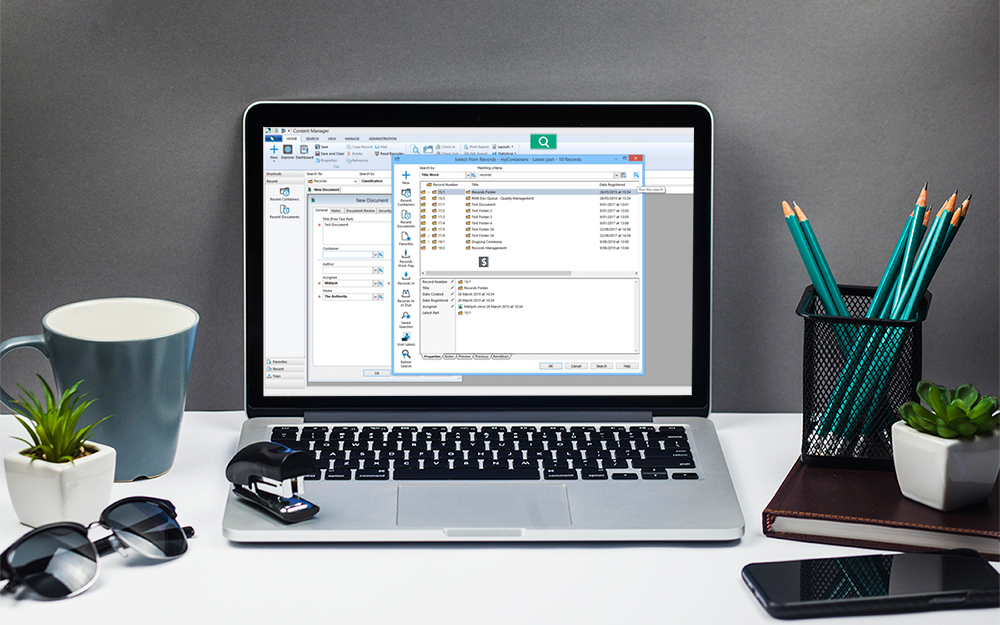
Content Manager 9.4 Sneak Peek – Video Demo
02.09.2019

What Version of SharePoint is on Office 365?
27.06.2019
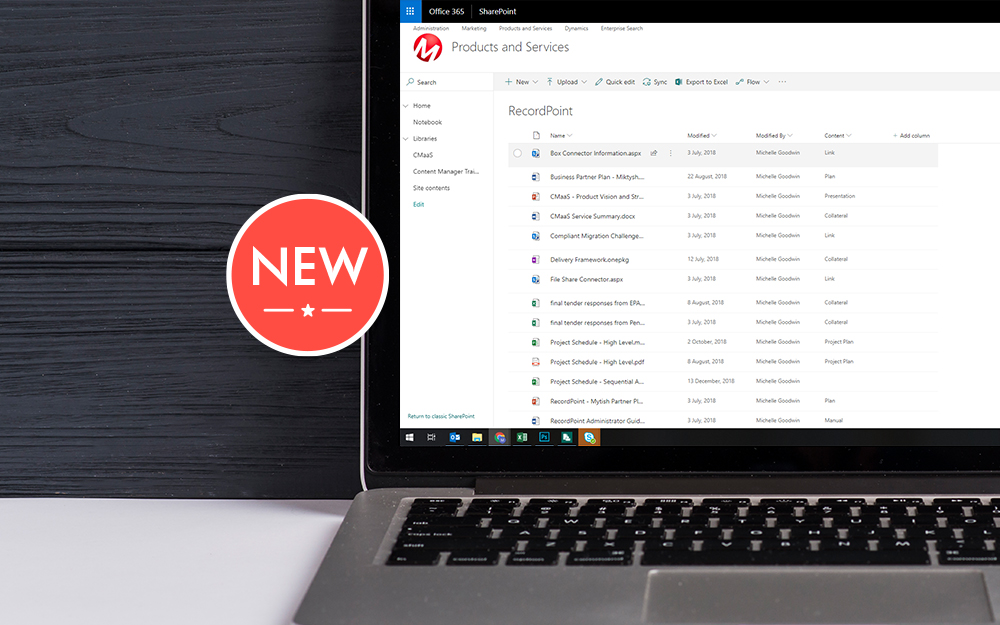
New SharePoint 2019 Features
08.03.2019

Data Migration Validation Best Practices
08.02.2019

Cloud Governance – RIMPA Queensland Event
27.09.2018

RecordPoint Records365 Demo
09.05.2018

How RecordPoint Enhances Office 365
09.05.2018

6 GDPR Tools to Assist with GDPR Compliance
17.04.2018

Analytics Driven Information Governance
14.07.2021

The New Normal Requires Zero Trust
27.06.2021

Microsoft 365 Records Management Whitepaper
06.11.2020

Micro Focus Launches Content Manager Select
28.05.2020

Content Manager SharePoint Integration Demo
20.05.2020

Top 7 Hidden Features in Microsoft Teams
11.02.2020

Integrate Content Manager with SharePoint
15.01.2020

Information Management Strategy Example
06.12.2019

How to Approach a Digital Transformation
13.11.2019

Top 5 Benefits of Migrating to Office 365
10.10.2019
Content Manager 9.4 Web Client
19.09.2019

Content Manager 9.4 Sneak Peek – Video Demo
02.09.2019

What Version of SharePoint is on Office 365?
27.06.2019

New SharePoint 2019 Features
08.03.2019

Data Migration Validation Best Practices
08.02.2019

Cloud Governance – RIMPA Queensland Event
27.09.2018

RecordPoint Records365 Demo
09.05.2018

How RecordPoint Enhances Office 365
09.05.2018

6 GDPR Tools to Assist with GDPR Compliance
17.04.2018
